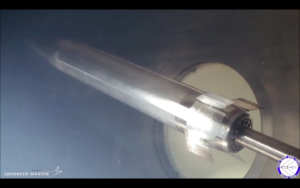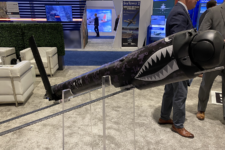Lockheed Martin and Raytheon are vying to build one of the Army’s top priorities, a new long-range Precision Strike Missile (PrSM) to replace the Cold War ATACMS. While ATACMS goes 186 miles, PrSM was originally designed to fly 310 — right up to the INF Treaty limit of 500 km — and now that the INF Treaty is defunct, the Army is talking about much longer ranges for PrSM, as well as future upgrades to the targeting system so it can kill moving targets like hostile warships.

Scale-model wind tunnel test of Lockheed’s Precision Strike Missile design (PrSM)
While overshadowed by the high-profile push for hypersonics, which use bleeding edge technology to strike targets more than 1,000 miles away, the simpler and shorter-range PrSM will probably be bought in larger numbers. That will likely make it the mainstay of future Army artillery brigades taking on everything from Russian anti-aircraft batteries to Chinese warships.
Lockheed Martin, as the builder of ATACMS, is the closest thing there is to an incumbent in this contest. Both contenders will test-fire their PrSM prototypes this fall, Raytheon in November and Lockheed in December. The Army will pick a winner in 2021.
Lockheed’s already conducted extensive testing of scale models in wind tunnels (see photo) and of the warhead’s explosive in an “arena” setup wired with high-speed measuring devices (see video above). We talked to Lockheed Missiles & Fire Control VP Gaylia Campbell about the program (see video below). And you can click here for Raytheon’s pitch for their version of PrSM.
Anduril debuts Pulsar AI-powered electronic warfare system
Company executives claimed the Pulsar system can use AI tools to quickly identify new threats and devise defenses against them, compressing the timeline for responding to rapidly-evolving electronic warfare.



























